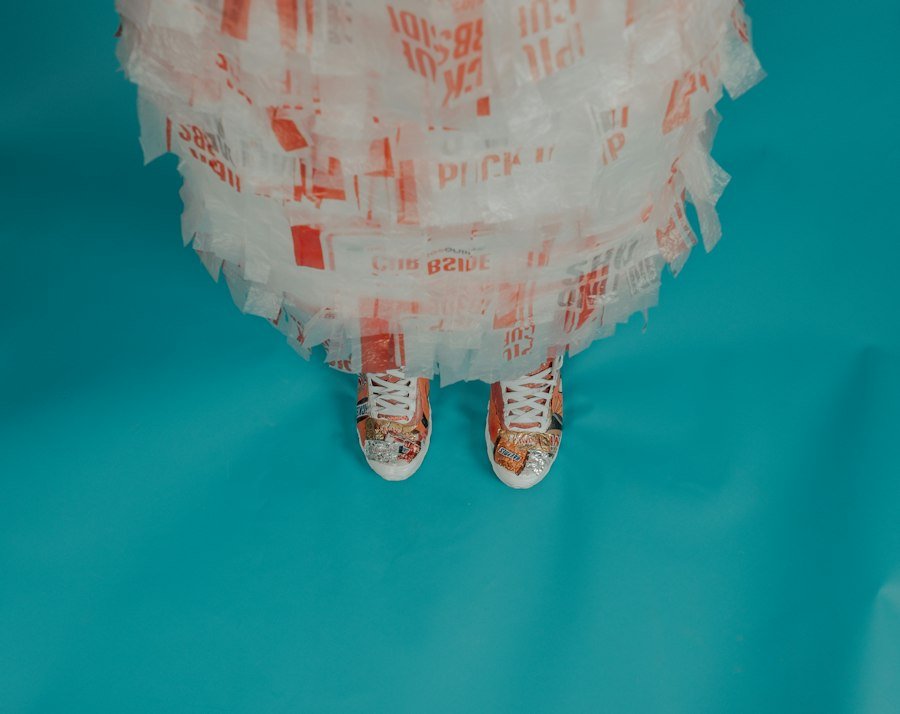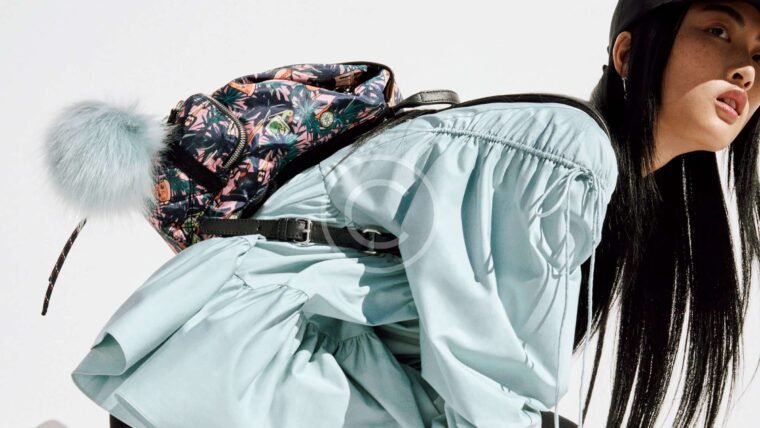Sustainable fashion is a growing movement within the fashion industry that aims to create clothing and accessories that have a minimal impact on the environment and promote social responsibility. It is a response to the negative environmental and social impacts of the fast fashion industry, which has been criticized for its excessive waste, pollution, and exploitation of workers.
The importance of sustainable fashion cannot be overstated. The fashion industry is one of the largest contributors to global pollution, with textile production alone accounting for 10% of global carbon emissions. Additionally, the industry is known for its use of toxic chemicals, excessive water consumption, and unethical labor practices. By embracing sustainable design principles, the fashion industry has the potential to significantly reduce its negative impact on the planet and improve the lives of workers in the supply chain.
The Rise of Sustainable Fashion: A Brief History
The concept of sustainable fashion has been around for decades, but it wasn’t until the early 2000s that it gained significant traction within the industry. In 2005, British designer Stella McCartney launched her eponymous brand with a commitment to sustainability and animal welfare. This marked a turning point in the industry, as McCartney’s success proved that sustainable fashion could be both stylish and commercially viable.
Since then, there have been several key milestones and events that have shaped the sustainable fashion movement. In 2009, the Copenhagen Fashion Summit was held, bringing together industry leaders to discuss sustainability in fashion. This event helped raise awareness about the environmental and social impacts of the industry and sparked a global conversation about the need for change.
In recent years, there has been a surge in interest in sustainable fashion from consumers, as well as increased support from governments and organizations. This has led to the development of initiatives such as the Sustainable Apparel Coalition’s Higg Index, which provides a standardized way for brands to measure and improve their sustainability performance. Overall, the rise of sustainable fashion can be attributed to a growing awareness of the need for more responsible and ethical practices within the industry.
Eco-Friendly Materials: The Future of Fashion
One of the key pillars of sustainable fashion is the use of eco-friendly materials. Traditional textiles, such as cotton and polyester, have a significant environmental impact due to their high water consumption, use of toxic chemicals, and contribution to microplastic pollution. In response, designers and brands are turning to alternative materials that are more sustainable.
One example of an eco-friendly material is organic cotton. Unlike conventional cotton, which is grown using large amounts of water and pesticides, organic cotton is grown without synthetic chemicals. This reduces the environmental impact of cotton production and promotes healthier working conditions for farmers.
Another innovative material being used in sustainable fashion is Tencel, a type of fabric made from wood pulp. Tencel is known for its softness, breathability, and biodegradability. It also requires less water and energy to produce compared to traditional textiles.
In addition to organic cotton and Tencel, there are many other sustainable materials being used in fashion today. These include recycled polyester made from plastic bottles, hemp, bamboo, and even fabrics made from food waste such as orange peel and pineapple leaves. The use of these materials not only reduces the industry’s reliance on non-renewable resources but also helps to reduce waste and pollution.
The Intersection of Fashion and Sustainability: Breaking Down Barriers
While sustainable fashion has made significant progress in recent years, there are still many challenges that designers and brands face in implementing sustainable practices. One of the main barriers is the perception that sustainable fashion is not fashionable or trendy. Many people still associate sustainable clothing with plain, boring designs and outdated styles.
To overcome this barrier, sustainable fashion designers are focusing on creating innovative and stylish designs that appeal to a wider audience. They are proving that sustainability and fashion can go hand in hand, and that being environmentally conscious doesn’t mean sacrificing style.
Another challenge is the high cost of sustainable materials and production methods. Sustainable materials are often more expensive than their conventional counterparts, making it difficult for smaller brands to afford them. Additionally, implementing sustainable practices throughout the supply chain, such as paying fair wages and ensuring safe working conditions, can also increase costs.
To address this challenge, the industry is working to find ways to make sustainable fashion more affordable and accessible. This includes investing in research and development to find new, cost-effective materials and production methods, as well as supporting initiatives that promote transparency and fair trade.
Trending Fashion: Bold Statements in Sustainable Design
Despite the challenges, there are many sustainable fashion brands that are making a name for themselves with their unique designs and innovative approaches. These brands are proving that sustainable fashion can be both stylish and environmentally friendly.
One example is Patagonia, an outdoor clothing brand known for its commitment to sustainability. Patagonia uses recycled materials in many of its products and has implemented a repair program to extend the life of its garments. The brand also advocates for environmental causes and encourages consumers to buy less and choose high-quality products that will last.
Another brand making waves in sustainable fashion is Reformation. Known for its feminine and trendy designs, Reformation uses eco-friendly materials such as Tencel and recycled polyester. The brand also focuses on transparency and provides detailed information about the environmental impact of each garment on its website.
In addition to individual brands, there are also sustainable fashion trends that are gaining popularity. For example, upcycling is becoming increasingly popular, with designers transforming old or discarded garments into new pieces. This not only reduces waste but also gives new life to old clothes.
The Role of Technology in Sustainable Fashion

Technology plays a crucial role in advancing sustainable fashion. It enables designers to create innovative materials, improve production processes, and reduce waste. One example of technology being used in sustainable fashion is 3D printing. This technology allows designers to create garments and accessories using less material and with greater precision, reducing waste and improving efficiency.
Digital design is another area where technology is making a difference in sustainable fashion. By using computer-aided design (CAD) software, designers can create virtual prototypes and make adjustments before producing physical samples. This reduces the need for multiple iterations and helps to minimize waste.
In addition to 3D printing and digital design, there are many other technologies being used in sustainable fashion. These include laser cutting, which allows for precise cutting and reduces fabric waste, and waterless dyeing techniques that eliminate the need for large amounts of water and toxic chemicals.
Overall, technology has the potential to revolutionize the fashion industry and make it more sustainable. By embracing new technologies, designers and brands can reduce their environmental impact and create more efficient and innovative products.
Ethical Fashion: The Importance of Fair Labor Practices
In addition to environmental sustainability, ethical considerations are also a key aspect of sustainable fashion. The fashion industry has long been criticized for its exploitative labor practices, with many workers in the supply chain facing low wages, long hours, and unsafe working conditions.
To address these issues, many sustainable fashion brands prioritize fair labor practices. They ensure that workers are paid a living wage, have safe working conditions, and are treated with dignity and respect. Some brands even go a step further by providing training and education opportunities for workers to help them build a better future.
One example of a brand that prioritizes ethical production is People Tree. People Tree works with fair trade producers in developing countries to create its garments. The brand ensures that workers receive fair wages, have safe working conditions, and are given opportunities for personal development.
Another brand that focuses on ethical production is Everlane. Everlane is known for its transparent pricing and commitment to fair labor practices. The brand works with ethical factories around the world and provides detailed information about the factories and workers on its website.
By prioritizing fair labor practices, sustainable fashion brands are not only improving the lives of workers but also setting an example for the industry as a whole. They are showing that it is possible to create beautiful and high-quality products while treating workers with respect and dignity.
Sustainable Fashion and the Circular Economy: A New Way Forward
The concept of the circular economy is gaining traction in the fashion industry as a way to reduce waste and create a more sustainable future. The circular economy is based on the principles of designing out waste and pollution, keeping products and materials in use, and regenerating natural systems.
In the context of fashion, the circular economy involves designing products that can be easily disassembled and recycled at the end of their life. It also includes implementing take-back programs, where customers can return their old garments to be recycled or repurposed.
Many brands are already implementing circular practices in their business models. For example, H&M has a garment collection program where customers can bring their old clothes to be recycled. The company then uses the recycled fibers to create new garments.
Another brand that embraces the circular economy is Eileen Fisher. Eileen Fisher has a take-back program where customers can return their old Eileen Fisher garments to be resold or repurposed. The brand also uses recycled materials in its products and has a goal to achieve 100% organic or recycled fibers by 2020.
By embracing the circular economy, fashion brands can reduce waste, conserve resources, and create a more sustainable industry. This shift towards a circular model is essential for addressing the environmental challenges posed by the fashion industry and moving towards a more sustainable future.
The Power of Collaboration: Building a Sustainable Fashion Community
Collaboration is key to driving change in the fashion industry. By working together, designers, brands, and organizations can share knowledge, resources, and best practices to create a more sustainable and ethical industry.
One example of collaboration in sustainable fashion is the Fashion Revolution movement. Fashion Revolution is a global campaign that aims to raise awareness about the social and environmental impacts of the fashion industry and promote transparency and accountability. The movement encourages consumers to ask brands “Who made my clothes?” and calls on brands to provide more information about their supply chains.
Another example of collaboration is the Sustainable Apparel Coalition (SAC). The SAC is an industry-wide initiative that brings together brands, retailers, manufacturers, and NGOs to promote sustainable practices in the apparel and footwear industry. The coalition has developed the Higg Index, a standardized tool for measuring and improving sustainability performance.
By collaborating, stakeholders in the fashion industry can work together to address common challenges and drive positive change. They can share knowledge and resources, learn from each other’s successes and failures, and create a collective impact that is greater than what they could achieve individually.
Embracing Sustainable Fashion for a Better Future
In conclusion, sustainable fashion is not just a passing trend but a necessary response to the environmental and social challenges posed by the fashion industry. By embracing sustainable design principles, using eco-friendly materials, prioritizing fair labor practices, and implementing circular practices, the fashion industry has the potential to significantly reduce its negative impact on the planet and improve the lives of workers in the supply chain.
However, achieving true sustainability in fashion requires a collective effort from all stakeholders involved. Consumers can support sustainable fashion by making conscious purchasing decisions, choosing high-quality products that will last, and demanding transparency from brands. Brands can prioritize sustainability by investing in research and development, adopting innovative technologies, and collaborating with other stakeholders. Governments can support sustainable fashion by implementing policies that promote transparency, fair trade, and environmental protection.
By working together, we can build a more sustainable and ethical fashion industry that respects both people and the planet. It is up to all of us to embrace sustainable fashion and make a positive impact on the industry and the world.




